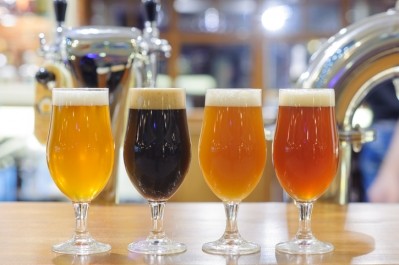‘Brewers are bouncing back!’ European data shows rise in beer sales

The Brewers of Europe – which compiles the data annually – says this shows the sector is ‘on the road to recovery’: although it warns the sector continues to face challenges moving forward.
The key to long-term success will be adapting and catering to evolving consumer trends, says the trade association.
Supply chain and energy cost woes
The 2023 Edition of the European Beer Trends Report – published today - shows that EU beer sales rose to 313 million hectolitres in 2022, up from 301 million hectolitres in 2021 and 297 million hectolitres in 2020.
However, this is still some way off the pre-pandemic level of 322 million hectolitres in 2019.
The challenges of 2020 are well-documented: with bars and restaurants forced to close. For beer, this was a particularly harsh blow (the weight of the on-trade channel varies greatly between countries, but for some countries is particularly significant, with Portugal normally relying on the on-trade for around two-thirds of its beer sales).
Today, the challenges are different, observes Simon Spillane, Head of Operations, The Brewers of Europe.
“Where once we battled a pandemic, now we face a war in Ukraine, tightening government budgets, a general cost of living crisis and a surge in raw materials prices.
"For brewers, this also translates into bottlenecks for the imports of cereals and malt, as well as packaging – glass bottles and aluminium cans – and fluctuating energy costs.
“Nor can we ignore the climate crisis: as temperatures shift further to the extremes, it is affecting agriculture, with harvests coming earlier and – in some cases – fires and floods destroying them.”
And - having already had to deal with the COVID crisis - the hospitality sector remains under pressure from increased costs and changing lifestyles. This has resulted in a noticeable shift from the on-trade to the off-trade (this trend is particularly evident in Spain, which has seen the share of on-trade sales of beer decrease from 68% to 59%).
In 2022, Germany remained Europe’s largest beer consumer: coming in at 79 million hectolitres. The UK* is the second largest (45 million hectolitres) followed by Spain (42 million hectolitres).
In per capita terms, however, the Czech Republic tops the list (136 liters per capita); followed by Austria (102 liters) and Poland (93 liters).
Germany remains Europe's biggest beer producer
In terms of production, some 358 million hectolitres of beer was made by breweries in the EU in 2022, up from 344 million hectolitres in 2021 and 342 million hectolitres in 2020. Again, however this was below the 364 million hectolitres recorded in 2019.
“High manufacturing costs (in mid-2023 they were 20-25% higher than in 2019), coupled with a sharp rise in shipping costs have prevented the dynamic export growth of the previous decade that might have compensated for the gradual recovery in beer consumption," says Spillane.
Germany, by far, is the biggest beer producer: with 87 million hectolitres produced in 2022. That’s more than double that of the second largest producer – Spain – at 41 million hectolitres.
What's in store for 2024?
Next year will see a number of elections take place across Europe: not least for the European Parliament in June.
"Beer is deeply entrenched in European history and there is a unique cultural heritage in beer. We need to constantly evolve while staying true to our essence to ensure a positive future"
- Simon Spillane
The Brewers of Europe - a trade association whose role is to provide a voice in Brussels to promote beer and represent the interests of brewers - knows that this will shape Europe's political future, with a new European Commission setting new policy priorities.
That means, for example, highlighting the economic contribution of beer and the jobs it creates. According to this week's data, the industry supports 2.6 million direct jobs, but with a multiplier effect of 16 – so for each brewery job there are 16 more jobs created in connected industries like agriculture and transport, according to the Brewers of Europe.
But it also means being willing to adapt and change around evolving consumer preferences.
“Brewers will have to show the importance and uniqueness of beer, that we can move with the times and that we can adapt to the changing environment,” says Spillane.
That means reducing environmental footprints and continuing to transition towards a clean, stable circular economy.
Top of the agenda is the European Packaging and Packaging Waste Directive: which was adopted by the European Parliament last week and could see a raft of long-term changes for drinks packaging (The Brewers of Europe believes the directive is 'flawed' in that wine and spirits are granted exemptions to certain rules when beer is not).
On the bright side, the number of active breweries continues to grow: from 9,500 breweries in 2021 to 9,680 in 2022. A growth in brewery numbers illustrates the growth in diversity and choice when it comes to the beer category, says The Brewers of Europe.
* The Brewers of Europe represents brewers in the 27 EU Member States: but also compiles data for the UK, Switzerland and Norway. If these three countries are included in the overall data set, beer consumption for 2022 comes in at 366 million hectolitres.







